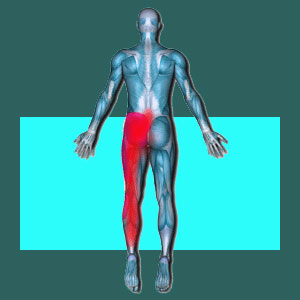
Left side sacroiliac pain describes unilateral symptoms which are expressed on the left side of the SI joint anatomy only. We have discovered some interesting facts about symptoms that affect the left side of the body and are happy to share our findings with both doctors and patients who are looking for rates of incidence for left versus right side involvement of the SI joint in chronic pain conditions.
Your letters are our inspiration for tracking the various statistics associated with a full range of dorsalgia conditions, including those which affect the sacroiliac joint. We have been keeping very detailed records of hundreds of thousands (100,000s) of patients over the course of more than fifteen years and the results of these statistical curating efforts are available in this very essay.
This dialog provides our findings on the nature of left sided unilateral SIJ pain conditions. We will contrast left sided sacroiliac joint pain against similar syndromes that affect the right side of the body only.
Left Side Sacroiliac Pain Statistics
We have found that about 65% of patients report significant and chronic sacroiliac pain on the left side of the body, rather than the right. 88% of these people are right handed, possibly creating some link between sacroiliac pain and the weaker side of the body. Some physical therapists have studied this statistic and have generated various causative theories to explain it. However, we can not comment on the reasons why it occurs, except to say that it certainly does in our clinical experience.
Patients who suffer left sided symptoms have approximately a 25% chance of developing bilateral SIJ pain concurrently in the right side or developing right sided unilateral expressions in the future. Below, we provide some possible explanations for why this might occur, using various models of causation.
Left Leg SIJ Pain Interpretation
Some doctors and therapists believe that pain is more common in the weaker side of the body due to the way the sacroiliac joint develops when we are young in response to our primary handed preference (right or left). Others cite subjective ideas about functional weight bearing and physical exertion models that might lead to accelerated degeneration or susceptibility to injury in the non-dominant side of the body. However, as mentioned above, our experience has not supported any of these theories universally.
When it comes to developing bilateral pain on the right side following a primary expression of unilateral left side pain, there are several logical answers as to why this might occur:
If the left side is weak due to injury, SI dysfunction or degeneration, it is normal to observe the right side taking a more active role in bearing weight and providing compensation for the besieged left sacroiliac structure. This can certainly place an exponentially greater stress load on the right side, potentially leading to injury, RSI, accelerated aging or functional deficits. This idea can be valid for both relatively quick development of right sided symptoms or delayed onset symptoms which are set in motion by the left sided dysfunction, but take time to fully develop symptomatically on the right.
However, it must be considered that a significant percentage of all sacroiliac pain is of mindbody nature and is not caused by the coincidental structural degeneration that is likely to be present. In these cases, the movement of symptoms is a natural and thoroughly documented psychogenic response to treatment, as well as the introduction of nocebo effect suggesting a heightened chance for developing bilateral or alternate side symptomology.
Sacroiliac Joint Pain > Sacroiliac Pain > Left Side Sacroiliac Pain




